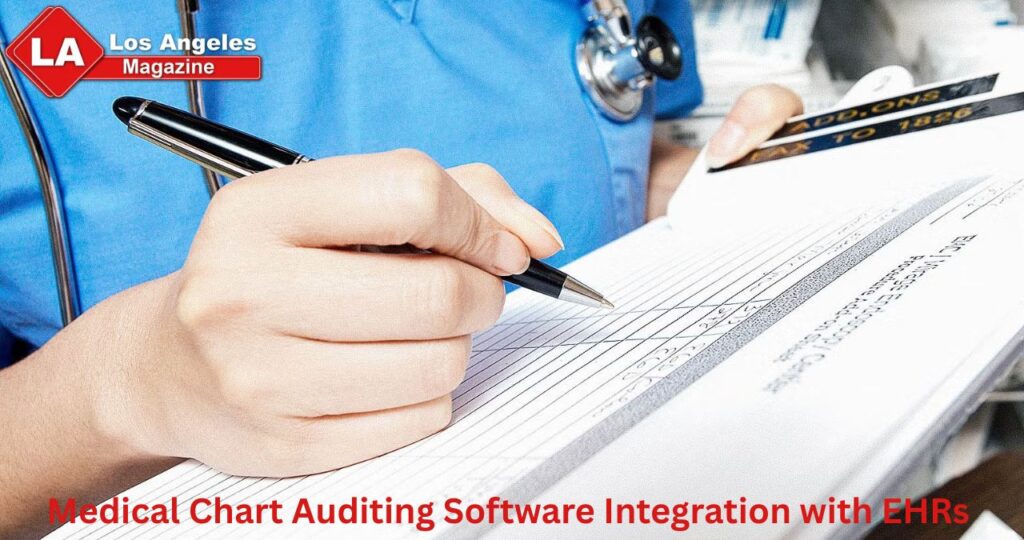Running a practice isn’t as easy as it looks from the outside. You’re balancing notes, billing, follow-ups and changing regulations, often all in one day. It’s no wonder things slip through the cracks sometimes.
That’s why many providers now rely on tools like medical chart auditing software that sync directly with their EHR. This setup doesn’t just simplify the back-end, it makes daily work smoother, helps avoid small mistakes and gives you more time to focus on clients.
Why Integration Actually Matters
Most behavioral health centers use an EHR already. It holds all your client records, treatment notes and billing info. But on its own, it doesn’t always catch small errors. That’s where medical chart auditing software steps in.
Without integration, you’re flipping between systems. You manually compare charts, notes and codes. That takes time and opens the door to errors. When you connect the two systems, your auditing tool pulls data straight from the EHR.
Everything syncs up. You spot problems earlier and fix them fast, without jumping through hoops.
What You Get When You Sync Them Up
Here’s how the process works once everything’s connected:
- In the EHR, you fill out your session note
- The auditing software reviews that note automatically
- Anything that is missing or incorrectly coded is flagged
- You fix it before it ever turns into a billing issue
You don’t have to wait until the end of the week for reviews. You don’t need to hire extra help to sort through dozens of charts. All of this takes place as you go about your daily activities.
How Your Practice Benefits Right Away
1. Less Back-and-Forth
You’re not flipping between platforms or dragging and dropping info. The software handles it for you. This makes it easier to stay focused during sessions and finish notes quicker.
2. Cleaner Claims, Faster Payments
A clean claim is a paid claim. The fewer errors in your documentation, the less likely it is that insurance will reject it. Your auditing tool helps you catch issues before they slow things down.
3. Fewer Compliance Surprises
Rules change fast in behavioral health. What was acceptable last year may now be outdated. Software for reviewing medical charts keeps your notes up to date with the most recent requirements. These inspections are made automatic through integration.
4. Your Staff Will Experience Less Stress
No one enjoys fixing outdated charts or looking for missing notes. With integrated software, you stay ahead of the curve. Your team can spend less time fixing and more time doing what they’re good at.
Choosing the Right Setup
Not every tool works with every EHR. Before you make a move, ask the right questions. Can this software connect with your current system? Does it offer real-time syncing? Will you need to upgrade anything?
Look for software that supports behavioral health specifically. You want features that understand your documentation style, your codes and your workflow.
Don’t skip the support side either. Choose a vendor that offers help with setup, training and everyday troubleshooting. A tool is only as good as the help you get when something breaks.
Common Roadblocks and How to Avoid Them
Even with the best setup, a few things can slow you down. But most are easy to work through if you know what to expect.
1. Too Much Data All at Once
Some tools try to pull every detail from your EHR. That can feel overwhelming. Choose software that lets you control what gets reviewed. Auditing everything every time is not necessary.
2. Team Pushback
Change is hard, especially in busy practices. Make the switch in steps. Start with a small group, get them comfortable, then roll it out to everyone else.
3. Privacy Concerns
You’re sharing client data between systems, so security matters. Make sure both your EHR and auditing software follow HIPAA rules. Find out how they store and encrypt your data..
4. Cost Worries
Integration might mean paying for a new module or feature. But think long-term. If this saves you from even one denied claim a week, it starts paying for itself fast.
A Few Tips to Make the Shift Easier
Thinking about switching soon? To make it smooth, take these steps:
- Map out the areas where you are currently losing time
- Decide whether billing delays, note errors or compliance gaps are your main sources of misery
- Find out if your EHR vendor supports integration by speaking with them
- Set up a demo with a few auditing software companies
- Test it out with five or ten charts
Once it’s up and running, give it a week or two before making big changes. Most systems take a little time to adjust to your workflow. Stick with it, it’s worth the effort.
Where It’s All Heading
Technology keeps moving forward, especially in healthcare. These days, several medical chart auditing programs have intelligent capabilities that recommend better documentation practices. Others can even predict future billing risks based on current trends. A study revealed machine learning tools cut claim denial rates by 25% and rework costs by 15%, just by flagging high-risk claims early.
But even without those advanced tools, simply linking your EHR to your auditing system makes your life easier. You save time. You avoid costly errors. Additionally, you remain client-focused rather than administrative.
Final Thoughts
You don’t need to overhaul your entire workflow. You just need better tools that work together. Integrating your medical chart auditing software with your EHR system makes your practice smoother, faster and more secure.
Start small. Ask questions. And choose software that actually supports the way you work. You’ll thank yourself later.



